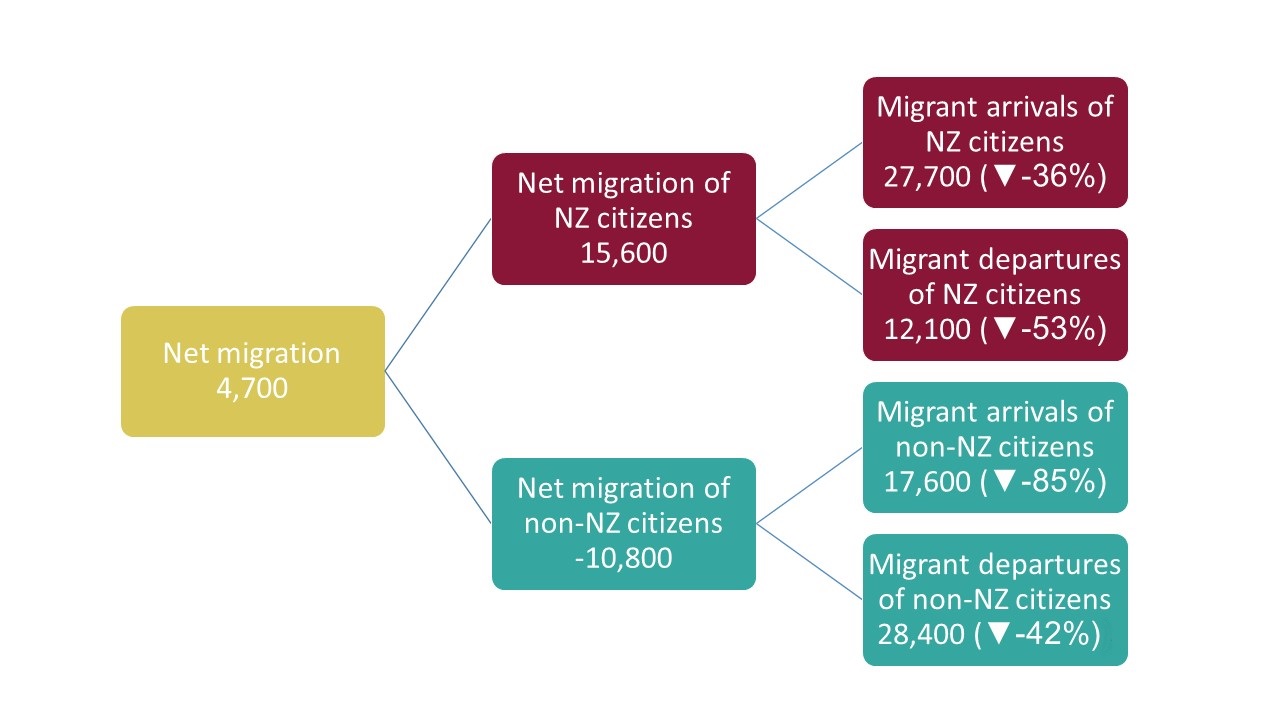Migration at lowest point in eight years
For many decades, thousands of New Zealand citizens have departed to live overseas annually, looking for better incomes, careers, and lifestyle opportunities. At the same time, thousands more migrants have moved to New Zealand, also looking for better incomes, careers, and lifestyle opportunities.
These trends have contributed to New Zealand’s overall population growth through net migration.
Migrant departures outstripping arrivals.
The COVID-19 pandemic has seen a dramatic reversal in net migration with June 2021 having the lowest figure for a June year since 2013.1 Our net migration gain is estimated at 4,700 for the twelve months to June 2021, with 45,300 people arriving and 40,500 departing.
International migration estimates (provisional), year ended June 2021

Over that year, roughly the same number of migrants left New Zealand as New Zealanders returned home. Migrant arrivals dropped dramatically in February 2020 as the pandemic took hold globally. The number of arrivals has averaged around 3,800 monthly since, largely due to the limitations managed isolation and quarantine (MIQ).
The trend of non-New Zealand citizens departing has slowed slightly since March 2021 but is still steady. With ongoing immigration restrictions and border closures, the net loss of migrants is likely to continue.
The number of New Zealanders returning from overseas has also slowed in the past quarter. With many countries in the northern hemisphere opening their borders and reducing restrictions, the drive to come home has eased off. In general, net migration of New Zealand citizens is still positive.
Meanwhile, two-way quarantine-free travel bubbles with Australia have opened and closed again. After picking up in April and May 2021, arrivals and departures dropped again over June and July. This was due to lockdowns in some Australian states, and quarantine-free travel from Australia to New Zealand being suspended.
Opening up a bubble with the Cook Islands has seen tourism pick up with some accommodation providers across Rarotonga and Aitutaki booked out till late 2021. Over 4,300 people travelled to the Cook Islands in June 2021, giving a much needed boost to the small economy that is dependent on international visitors.
These patterns of travel are our ‘new normal’ with travel and migration. The Government announced their plans for the border re-opening from 2022. But as we’ve already seen with the Australian bubble, plans can change. The deepening skills shortage may force the Government’s hand.
We are heading into a skills crisis as skilled migrants desperate to see their families and frustrated with the lack of progress on visas, give up and head home or to more welcoming shores. Industries that have depended on migrant labour have had the tap turned off abruptly. 2022 is likely to be too long a wait for health care, construction, and other sectors already experiencing skilled staff shortages and unable to recruit locally.
- The figure is provisional. Provisional migration estimates are revised each month until they are finalised after 16 months.